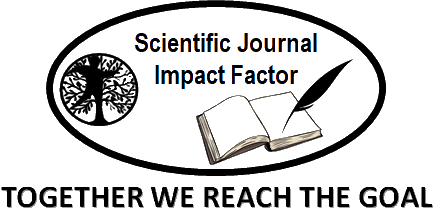Turbidity Removal efficiency of different inorganic coagulants during water treatment - A review
Abstract
Accessible drinking water sources, including ground and surface waters, are being polluted because of changing climates and other human activities. Turbidity is a critical factor in water treatment processes because it significantly impacts water quality, as it is a measure of the transparency of water, with turbidity increasing as the concentration of suspended particulates increases. This process removes turbidity from the surface water and converts dissolved organic matter into suspended colloidal material. Conventional iron and aluminum salts and synthetic polymers are commonly used as chemical coagulants for surface water treatment. Coagulation-flocculation is also the most conventional treatment process in water treatment plants.
The turbidity removal for Alum varies from 94.14% to 99%. The turbidity removal for PACl ranges from 88% to 99% and 77% to 99% for Ferric chloride coagulant. The alum and ferric chloride are among the most extensively used chemical coagulants in many countries.Keywords
Full Text:
PDFReferences
Al-Wasify, R. S., et al. (2023). "Assessing the potential of de-oiled peanut (Arachis hypogea) seeds for surface water treatment: A sustainable alternative to chemical coagulants."
Asharuddin, S. M., et al. (2021). "Recent advancement in starch modification and its application as water treatment agent." 23: 101637.
Benalia, A., et al. (2021). "Use of Aloe vera as an organic coagulant for improving drinking water quality." 13(15): 2024.
Bouyakhsass, R., et al. (2023). "Optimization of Coagulation-Flocculation for Landfill Leachate Treatment: An Experimental Design Approach Using Response Surface Methodology." 100841.
Chiavola, A., et al. (2023). "A combined experimental-modeling approach for turbidity removal optimization in a coagulation–flocculation unit of a drinking water treatment plant." 130: 103068.
Cui, H., et al. (2020). "Application progress of enhanced coagulation in water treatment." 10(34): 20231-20244.
Dayarathne, H., et al. (2022). "Effect of temperature on turbidity removal by coagulation: Sludge recirculation for rapid settling." 46: 102559.
Dayarathne, H., et al. (2022). "Optimisation of dual coagulation process for the removal of turbidity in source water using streaming potential." 16: 100714.
de Camargo, E. T., et al. (2023). "Low-cost water quality sensors for IoT: A systematic review." 23(9): 4424.
de Oliveira Anício, S., et al. (2021). "PSD and Fractal Dimension for flocculation with different parameters and ferric chloride, aluminium polychloride and aluminium sulfate as coagulants." 43: 102180.
Dhrubo, A. A. K., et al. (2023). "Enhancing the performance of coagulants for wastewater treatment by varying and optimizing the experimental parameters." 55: 104144.
El-taweel, R. M., et al. (2023). "A review of coagulation explaining its definition, mechanism, coagulant types, and optimization models; RSM, and ANN." 100358.
Gobena, B., et al. (2020). "Evaluation of Residual Al3+ and Fe3+ Concentration in Blended Alum-Ferric Chloride Coagulant Use." 6(3).
Guo, B., et al. (2023). "An enhanced coagulation using ferric chloride and poly-ferric chloride coagulant assisted by polyamidine: Performance and mechanisms." 108379.
He, S., et al. (2024). "Coal gasification coarse slag based composite ferric aluminum silicate coagulants: Preparation, performance, and mechanism." 181: 167-181.
Jasim, N. A., et al. (2022). "A comparative study of different coagulants used in treatment of turbid water." 12(1): 890-904.
Karim, K., et al. (2020). "Comparative analysis of chemical, physical and biological contaminants in drinking water in various developed countries around the world." 12(8): 714-728.
Kumari, M. and S. K. J. J. o. C. P. Gupta (2020). "A novel process of adsorption cum enhanced coagulation-flocculation spiked with magnetic nanoadsorbents for the removal of aromatic and hydrophobic fraction of natural organic matter along with turbidity from drinking water." 244: 118899.
Mohamed, A., et al. (2020). "Appraisal and ranking of poly-aluminium chloride, ferric chloride and alum for the treatment of dairy soiled water." 267: 110567.
Otálora, M. C., et al. (2022). "Evaluation of Turbidity and Color Removal in Water Treatment: A Comparative Study between Opuntia ficus-indica Fruit Peel Mucilage and FeCl3." 15(1): 217.
Pivokonsky, M., et al. (2024). "Fundamental chemical aspects of coagulation in drinking water treatment–Back to basics." 57: 104660.
Rizvi, O. S., et al. (2022). "Application of poly aluminum chloride and alum as catalyst in catalytic ozonation process after coagulation for the treatment of textile wastewater." 323: 115977.
Rodrigues, J. N., et al. (2023). "A meta-analytical review of turbidity effects on fish mobility." 33(4): 1113-1127.
Rosińska, A., et al. (2021). "Influence of type and dose of coagulants on effectiveness of PAH removal in coagulation water treatment." 14(3): 193-200.
Salehin, S., et al. (2020). "Effects of aging of ferric-based drinking water sludge on its reactivity for sulfide and phosphate removal." 184: 116179.
Salem, A. K., et al. (2023). "Potential plant leaves as sustainable green coagulant for turbidity removal." 9(5).
Saththasivam, J., et al. (2022). "Evaluating dissolved air flotation for oil/water separation using a hybridized coagulant of ferric chloride and chitosan." 47: 102836.
SDWF, S. D. W. F. (2023). "Conventional water treatment: Coagulation and filttration ".
Shi, C., et al. (2023). "Inorganic composite coagulant for wool scouring wastewater treatment: Performance, kinetics and coagulation mechanism." 313: 123482.
Shi, Z., et al. (2022). "Determination of coagulant dosages for process control using online UV-Vis spectra of raw water." 45: 102526.
Singh, M. and B. Kishor (2020). "A review on removal of turbidity and tds from water by using natural coagulants."
Skaf, D. W., et al. (2020). "Removal of micron-sized microplastic particles from simulated drinking water via alum coagulation." 386: 123807.
Tang, S., et al. (2023). "The coagulation behavior and removal efficiency of microplastics in drinking water treatment." 53: 103885.
Wang, D., et al. (2022). "Predicting flocculant dosage in the drinking water treatment process using Elman neural network." 29(5): 7014-7024.
Wu, L., et al. (2023). "Understanding synergistic mechanisms of silicate decorated polyaluminium chloride and organic polymer flocculation for enhancing polymer-flooding wastewater treatment." 170: 1-10.
Yaghoobian, S., et al. (2022). "Performance evaluation of Fe-based water treatment sludge for dewatering of iron ore tailings slurry using coagulation-flocculation process: Optimization through response surface methodology." 316: 115240.
Zaki, N., et al. (2023). "Advancements in the chemical treatment of potable water and industrial wastewater using the coagulation–flocculation process." 58(15-16): 2619-2630.
Zhang, H., et al. (2023). "Preparation of polyaluminium silicate sulphate by gravity supercritical method and its coagulation in oily sewage." 313: 137504.
Zweifler, A., et al. (2021). "Turbid coral reefs: past, present and future—a review." 13(6): 251.
DOI: http://dx.doi.org/10.52155/ijpsat.v50.2.7221
Refbacks
- There are currently no refbacks.
Copyright (c) 2025 NIZEYIMANA Ladislas

This work is licensed under a Creative Commons Attribution 4.0 International License.



















